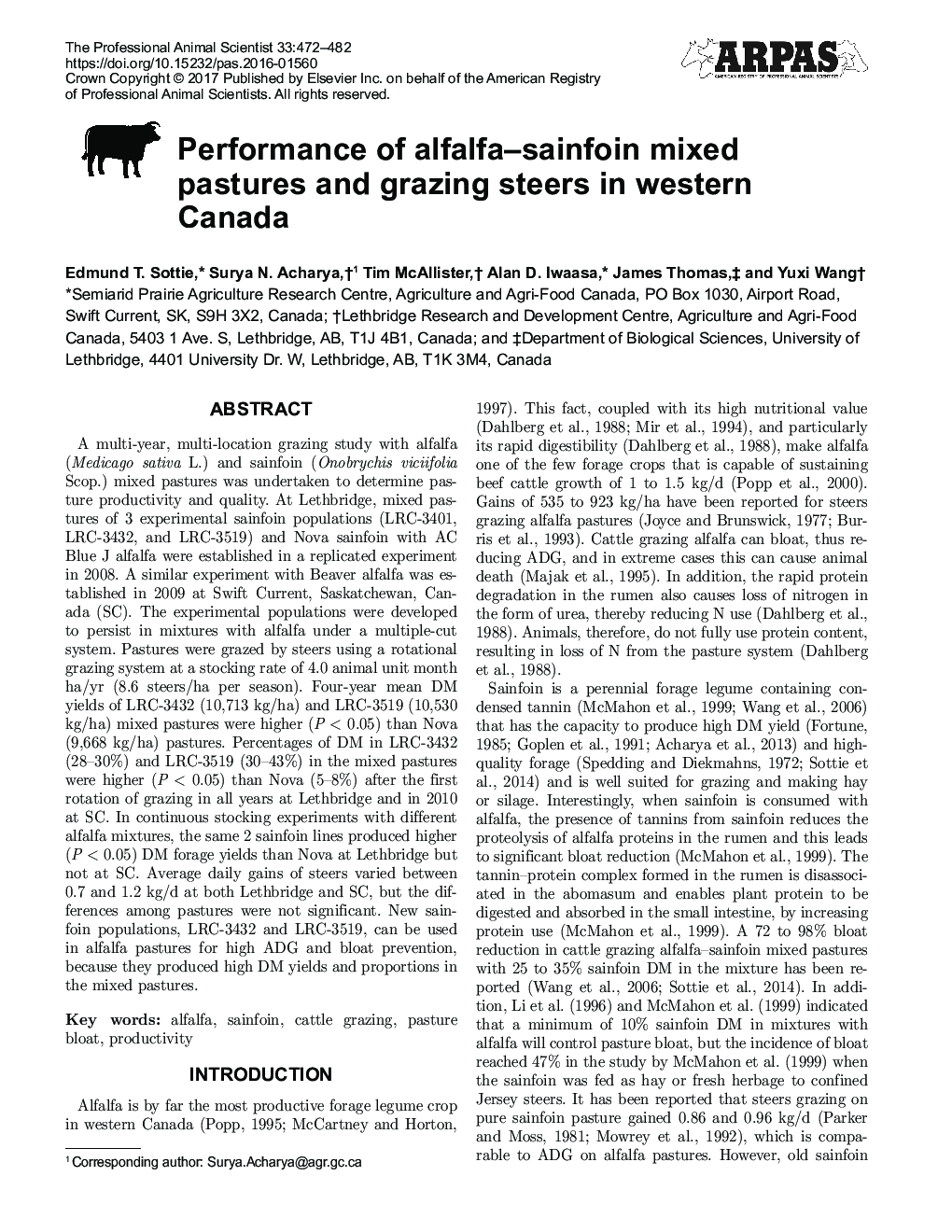| Article ID | Journal | Published Year | Pages | File Type |
|---|---|---|---|---|
| 8503743 | The Professional Animal Scientist | 2017 | 11 Pages |
Abstract
A multi-year, multi-location grazing study with alfalfa (Medicago sativa L.) and sainfoin (Onobrychis viciifolia Scop.) mixed pastures was undertaken to determine pasture productivity and quality. At Lethbridge, mixed pastures of 3 experimental sainfoin populations (LRC-3401, LRC-3432, and LRC-3519) and Nova sainfoin with AC Blue J alfalfa were established in a replicated experiment in 2008. A similar experiment with Beaver alfalfa was established in 2009 at Swift Current, Saskatchewan, Canada (SC). The experimental populations were developed to persist in mixtures with alfalfa under a multiple-cut system. Pastures were grazed by steers using a rotational grazing system at a stocking rate of 4.0 animal unit month ha/yr (8.6 steers/ha per season). Four-year mean DM yields of LRC-3432 (10,713 kg/ha) and LRC-3519 (10,530 kg/ha) mixed pastures were higher (P < 0.05) than Nova (9,668 kg/ha) pastures. Percentages of DM in LRC-3432 (28-30%) and LRC-3519 (30-43%) in the mixed pastures were higher (P < 0.05) than Nova (5-8%) after the first rotation of grazing in all years at Lethbridge and in 2010 at SC. In continuous stocking experiments with different alfalfa mixtures, the same 2 sainfoin lines produced higher (P < 0.05) DM forage yields than Nova at Lethbridge but not at SC. Average daily gains of steers varied between 0.7 and 1.2 kg/d at both Lethbridge and SC, but the differences among pastures were not significant. New sainfoin populations, LRC-3432 and LRC-3519, can be used in alfalfa pastures for high ADG and bloat prevention, because they produced high DM yields and proportions in the mixed pastures.
Keywords
Related Topics
Life Sciences
Agricultural and Biological Sciences
Animal Science and Zoology
Authors
Edmund T. Sottie, Surya N. Acharya, Tim McAllister, Alan D. Iwaasa, James Thomas, Yuxi Wang,
